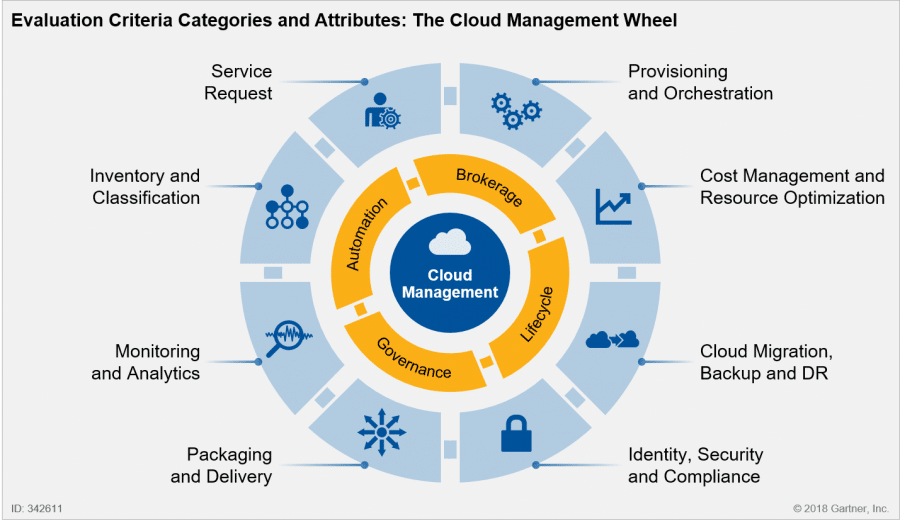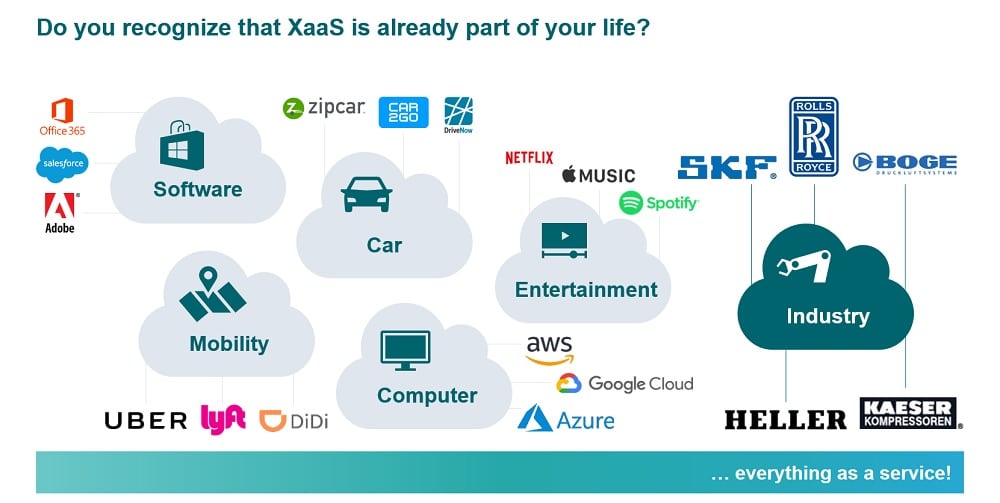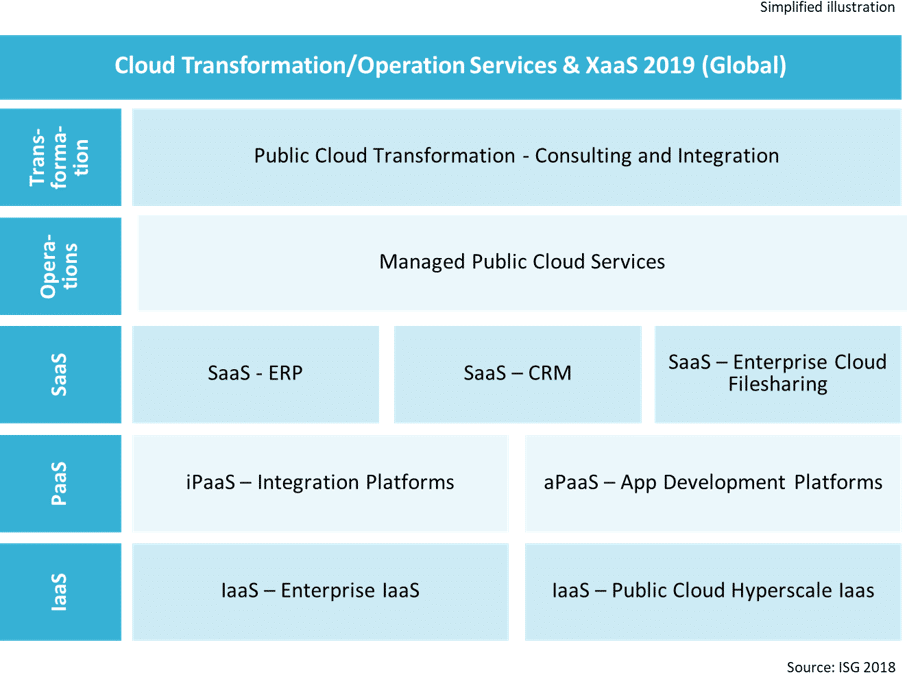In this article, we'll cover:
In the constantly evolving digital marketplace, we are seeing new innovations, products, and ways of doing things. Perhaps one of the most significant things we have seen in recent years is the advent of the cloud computing era.
Before we had cloud computing, all software applications you bought, from business-related software such as Microsoft 365 through to your favourite game, would have been physically bought in a shop and then installed on your computer.
But now most computing resources are purchased or obtained from a cloud platform, whether direct from the manufacturer or from retail and channel partners.

Perhaps one of the biggest – and most advantageous – features of using cloud services is that you do not actually have to buy a product outright. How many applications did you buy under the old physical software model, only to find that they did not suit your needs or you simply didn’t like them?
The internet of things (IoT) is another cornerstone of many businesses that need to function online, and XaaS is a major contributing factor to how well this works for you, too.
Let’s look at what exactly XaaS is, what its benefits are, its disadvantages—if any—and then some examples of how it works.
What is XaaS?
As you may have suspected, XaaS is an acronym, although in this case, the ‘X’ stands for ‘anything’. So the whole idea of XaaS is ‘anything as a service’. It is an extremely wide-ranging term that refers to any tools, applications, services, games, etc., which are delivered to your laptop or other device via the cloud, rather than obtained on-premises or in a physical format.
Most major companies now offer some form of XaaS, including Microsoft Azure, the various Amazon Web Services (AWS), and even Google Apps. In fact, if there are any types of IT services or computer-based functionality you require, then there is a high probability you can obtain it as XaaS. Some of the most common types of XaaS include:
- Software as a Service (SaaS)
- Platform as a Service (PaaS)
- Infrastructure as a Service (IaaS)
- Storage as a Service (StaaS)
- Database as a Service (DBaaS)
- Disaster Recovery as a Service (DRaaS)
- Communications as a Service (CaaS)
- Network as a Service (NaaS)
- Data as a Service (DaaS)
These are all legitimate versions of services offered by cloud providers. But there is even a criminal version of this type of delivery. Malware as a Service (MaaS) is a form of organised cybercrime where end-users subscribe to a service that provides them with malware to mount attacks.
Of the list of various services offered by the XaaS model above, three of those are seen as ‘pillars’ of XaaS: SaaS, PaaS, and IaaS.
SaaS: In this version, a provider hosts applications and software in the cloud and then offers them to consumers on a subscription basis. A good example of this would be Adobe, which offers a range of packages. Depending on the needs of the customer, they may choose to subscribe to one application, such as Adobe Photoshop, or to one of the various bundles of applications.
PaaS: With PaaS, the service provider delivers a platform to clients where they can host, run, manage, or develop applications without having to create or maintain their own on-premises or cloud infrastructure.
IaaS: IaaS, also known as cloud infrastructure services, consists of automated and easily scalable computing resources. This allows businesses access to all the IT infrastructure they need, whether on a temporary or long term basis. The favourable pricing of this service model offers the advantage to companies of not having to invest in hardware that may only be used a few times.
By outsourcing their infrastructure needs, companies have access to anything they need, including networks, operating systems, servers, and data center storage.

What are the benefits of XaaS?
The primary benefit of using the XaaS model is a financial one. There is a reduction in the need for capital expenditure, as your focus shifts to operational expenditure, thus often reducing the total cost of ownership. This is a boon for any business, but particularly for startup businesses that may have limited capital and who are able to customise XaaS to their needs at any given time.
Prior to XaaS being available, a business had to buy everything they needed for their particular business processes. This could include software, hardware, servers, and more, and then had to link it all together to create a network that suited their needs. Now they just identify their general needs and subscribe to a service that provides them, while being able to add on new components as and when needed.
Often, when it comes to communications, businesses will look for a vendor that offers Unified Communications as a Service (UCaaS) to provide a fully integrated system. Such integration also delivers key benefits in the area of productivity and cost-saving.
Scalability is perhaps the next most important benefit. Different business models not only have varying initial needs but also needs that change over time. Say, for example, an SME has been operating with a certain level of XaaS services that suit their normal working needs, but they then take on a new project that significantly increases those demands.
Anyone who has worked with any major software application knows that updates and add-ons can happen frequently. With the old fashioned purchase/ownership model, this means an added expenditure, often on a regular basis. If you are using an as a service (aaS) model, then any updates may be free of charge and new versions may be discounted.
The XaaS model also offers businesses extreme flexibility. If the market changes or if the needs of clients change, then it is easy to add on new apps or solutions to existing virtual packages.
This could be on a temporary basis (if a particular piece of software is needed for a one-off project) or on a long-term basis (if older software has been superseded by a new release). Application development is constantly evolving and XaaS allows businesses to stay abreast of this.
Any business knows the importance of resource allocation. By integrating the XaaS model into how your company operates, you free up staff and resources to work on other projects. Many IT organisations find that XaaS allows them more agility in the marketplace, and frees up their IT staff to focus on innovation and development.
Using XaaS for your CRM systems can also increase the efficiencies of such systems while saving on operating expenses.

Advantages and disadvantages of XaaS
The main benefits of XaaS have been listed above, but there are some other advantages and, as you would expect, some potential disadvantages, too.
Advantages
- Financial savings and efficiency.
Particularly important for small companies, the transfer of outgoings from capital expenditure to operational expenses can make a real difference to survival and growth.
- Improved productivity.
Using XaaS can avoid, or at least lessen, the effects of things such as network downtime.
- Higher levels of cybersecurity.
Small businesses and enterprises are a favoured target of hackers and cybercriminals. 28% of the breaches in 2019 Involved small business victims. Many businesses opt for lower cost cybersecurity measures that offer less protection. By using XaaS, you can have better security without exorbitant costs.
- Agility.
XaaS allows companies to be more responsive to client needs and market changes and allows them to access tools, software, and other solutions that they may otherwise find too expensive.
- Growth.
By reducing capital expenditure and enabling simple scalability, XaaS enables owners and managers to grow their business. With XaaS, owners will find it easier to identify and access the right technology and allow their salesforce to chase new business that may have been beyond their potential capacity.
- Data.
XaaS takes instinct out of the equation when it comes to making crucial business choices. Instinct can lead to bad decisions, but access to the relevant data means that informed decisions can lead to better results.
- Relevance.
With constantly evolving technology and software, XaaS allows small businesses to stay relevant to market and client demands as new products become available.
- Convenience.
Many updates of XaaS-related systems happen automatically, thus saving time and money in checking, installing, and rolling out to employees.
- Backup and Protection.
Your systems and data are vital currencies in the world of business. Loss of data can spell disaster for your company. With XaaS and cloud computing models, your systems and data are protected in your own private cloud account. This ensures that disaster recovery is a simple process in the event of any incidents.

Disadvantages.
So far, it all sounds perfect, but as with any process or system, there are some potential disadvantages to XaaS.
- Downtime.
We have all experienced some level of internet downtime and, even with XaaS, this is a potential issue that may arise. If your XaaS provider’s servers go down then that will also affect you. Some XaaS providers may guarantee services through a service level agreement (SLA).
- Performance.
XaaS is becoming increasingly more popular and, as that happens, there can be issues with latency, functionality, bandwidth, etc. If you are running apps within a virtual environment, especially a public cloud environment, then they may also be affected.
- Integration.
As digital transformation speeds up and we move to increased levels of automation, there may also be some issues with integration – especially if your business is working across more than one cloud service.
- Troubleshooting.
While shifting many of your business components to XaaS relieves your own staff of many of their regular tasks, if issues do arise then it may be harder for your IT staff to troubleshoot the problem. Provisioning for those staff to stay up to date in the technology may lessen any impact.

What are the XaaS examples?
XaaS is a very wide-ranging term. Some of those mentioned already are self-explanatory, but let’s look at some other examples of the service.
Hardware as a Service (HaaS)
This is similar to the way in which a business might lease vehicles instead of purchasing outright. The provider owns the hardware and installs it on the client’s site. This allows clients to utilise hardware they may not be able to afford to purchase, and is especially beneficial to small and medium-sized businesses.
Communication as a Service (CaaS)
Communication is one of the most vital tools for many businesses. By using CaaS solutions, it allows a business to access a variety of communication tools and applications as needed. These can include VoIP technology, virtual conferencing tools, and more. The business pays only for a subscription, sometimes based on the time they use these tools, making it highly cost-effective.
Desktop as a Service (DaaS)
There are times when your staff may need to compute tasks that are beyond their PC or laptop’s abilities. DaaS allows them to access greater computing capacity from a third-party server.
Healthcare as a Service (HaaS)
The healthcare sector is becoming increasingly digitised. By integrating HaaS into your practice or your hospital, you allow for easier sharing of crucial information, online consultations, prescription deliveries, and other vital services. It can also contribute to measuring any ROI for your healthcare business.
The Takeaway
In an era when computing services are seeing increased levels of automation and artificial intelligence, choosing the ideal delivery model that fits with your company is an important decision. While public services such as Google Cloud may suit some minor needs, a private cloud service offers better functions and security.
XaaS offers many benefits to any size of the company, but particularly to small and medium-sized businesses keeping a careful eye on finances and capital expenditure. If your company uses any level of IT services, then it is worth investigating how XaaS can help you.
Originally published Feb 01, 2021, updated May 15, 2021


